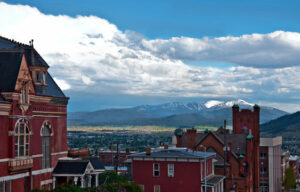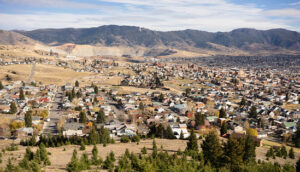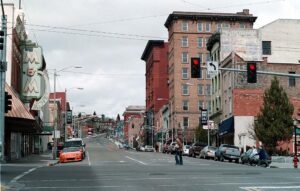Once a bustling, mining town worth billions, Butte (population 35,000) is a hard-working, no-nonsense town that’s known for marching to the beat of its own drum. After all, its nickname is Butte, America.
But you can’t appreciate Butte’s rich, unique culture—past and present—without understanding the influence of the Irish that migrated to Montana beginning in the late 1800s.
Finding the American Dream
People were first attracted to Butte through gold’s illustrious siren song, but by the 1870’s riverbeds had run dry and the town was on its decline. Then miners discovered Butte’s rich veins of silver ore and from there, copper. By the 20th century, Butte was the world’s largest copper-mining town. For decades to come it would be one of the most prosperous cities in America—especially for immigrants.
This economic opportunity drew pioneering men from across oceans who desired to make a better life for their families. Immigrants came from around the world: Ireland, England, Lebanon, Canada, Finland Austria, Italy, China, Montenegro and Mexico. It’s said the “no smoking” signs in mines were written in sixteen languages.

But no other cultural group flocked to Butte quite like the Irish. To escape the Great Irish Famine, which lasted between 1845 and 1852 and killed millions of Irish men and women, scores of people fled the country, escaping to America. And by America, I mean Butte.
At the height of Butte’s prosperity, the city housed more Irish than any other American city. According to the book, The Butte Irish, by the turn of the 20th century the Irish made up a quarter of Butte’s population, immigrating from Cork, Mayo, Donegal, Kerry, Cavan and Wexford.

The Irish immediately took to unionizing, protecting their economic interests that had been suppressed by the British back home, said Irish professor, Donnchadh O Baoill, quoted in a 2013 Montana Standard article. Thus began a long, sometimes deadly battle between the unions and the large mining corporations that controlled the town.
In spite of, or perhaps because of, the tremulous life in Butte, the Irish formed a tight, strong community that persevered through these dark times. Their influence shaped the city into what it is today.
Butte today
The city’s Irish heritage permeates everyday life in the city to this day. The Irish community in Butte is tightknit and fiercely loyal to the country from which they’re descended. Children learn Irish dance at the Tiernan Irish dancing school, famous Irishmen like the Irish ambassador to the United States have stopped to speak in the city and local Irish band, Dublin Gulch, are beloved by the community.
They celebrate this heritage every chance they get—no way more obvious than the annual St. Patrick’s Day festivities (which started in 1882). According to the magazine, Irish America, over 30,000 people from around the state and country gather in Butte to celebrate the city’s heritage. Festivities include the famous parade through the historic Uptown district, held by the Ancient Order of Hibernians.
The annual An Ri Ra Irish Festival is an equally impressive celebration of Irish culture. Held by the Montana Gaelic Cultural Society, the festival highlights traditional Irish art, including dance and music, and offers Irish language classes and impressive raffle prizes (like a trip to Ireland). It’s regarded as one of the best Irish festivals in North America.
Live in Butte and you’ll see why it’s known as one of the most Irish cities in America.





